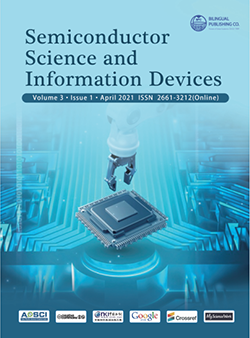The Role of Multi-factor Authentication for Modern Day Security
DOI:
https://doi.org/10.30564/ssid.v3i1.3152Abstract
Multi-factor Authentication (MFA) often referred to as Two-factor Authentication (2FA), which is a subset of MFA, is the practice of implementing additional security methods on top of a standard username and password to help authenticate the identity of a user and increase the security of data.This chapter will investigate the problem with username and password logins, the different types of authentication, current best practice for multi-factor authentication and interpretations about how the technology will grow in the upcoming years.
Keywords:
Multi-factor authentication; Cybersecurity; 2FAReferences
[1] Archana, B. S., Chandrashekar, A., Bangi, A. G.,Sanjana, B. M. and Akram, S. (2017) Survey on usable and secure two-factor authentication.
[2] Bošnjak, L., Sreš, J. and Brumen, B. (2018) Bruteforce and dictionary attack on hashed real-world passwords.
[3] Tatli, E. I. (2015) Cracking More Password Hashes With Patterns.
[4] Gautam, T. and Jain, A. (2015) Analysis of brute force attack using TG — Dataset.
[5] Theocharoulis, K., Papaefstathiou, I. and Manifavas C. (2010) Implementing Rainbow Tables in HighEnd FPGAs for Super-Fast Password Cracking.
[6] Kumar, H., Kumar, S., Joseph, R., Kumar, D., Shrinarayan Singh, S. K., Kumar, P. and Kumar H.(2013) Rainbow table to crack password using MD5 hashing algorithm.
[7] British Standards Institution. (2017) BS ISO 9564-1:2017 Financial services. Personal Identification Number (PIN) management and security. Basic principles and requirements for PINs in card-based systems. BSI Standards Limited.
[8] PayPal. (2014). Password and PIN security. Available:https://www.paypal.com/us/webapps/mpp/security/secure-passwords. Last accessed 7th November 2019.
[9] Rouse, M. (2015). knowledge-based authentication (KBA). Available:https://searchsecurity.techtarget.com/definition/knowledge-based-authentication. Last accessed 7th November 2019.
[10] Schechter, S., Brush, A.J.B. and Egelman, S. (2009) It’s No Secret. Measuring the Security and Reliability of Authentication via “Secret” Questions.
[11] How-To Geek. (2014). Security Questions Are Insecure: How to Protect Your Accounts.Available:https://www.howtogeek.com/185354/security-questions-are-insecure-how-to-protect-your-accounts/.Last accessed 7th November 2019.
[12] FIDO Alliance. (2013). FIDO U2F Security Key.Available: https://fidoalliance.org/showcase/fido-u2f-security-key/. Last accessed 8th November 2019.
[13] Sudar, C., Arjun, S. K. and Deepthi, L. R. (2017) Time-based one-time password for Wi-Fi authentication and security.
[14] Muppidi, S. (2017) Companies Need More Than Two-Factor Authentication to Keep Users Safe.Harvard Business Review Digital Articles, 2-4.
[15] Kugler, L. (2019) The Trouble with SMS Two-Factor Authentication. Communications of the ACM, 62 (6),14-14.
[16] Ghosh, S., Goswami, J., Kumar, A. and Majumder, A.(2015) Issues in NFC as a form of contactless communication: A comprehensive survey.
[17] Haselsteiner, E. and Breitfuß K. (2007). Security In Near Field Communication (NFC) Strengths and Weaknesses. In: Goje, Amol C., Gornale, Shivanand S. and Yannawar, Pravin L. Proceedings of the 2nd National Conference on Emerging Trends in Information Technology (eIT-2007). New Delhi:L.K. International Publishing House Pvt. Ltd. 74.
[18] Symanovich, S. (2019). How does facial recognition work? Available:https://us.norton.com/internetsecurity-iot-how-facial-recognition-software-works.html.Last accessed 9th November 2019.
[19] Elets News Network. (2018). From July 1, authenticate Aadhaar through face recognition.Available:https://egov.eletsonline.com/2018/01/from-july-1-authenticate-aadhaar-through-face-recognition/. Last accessed 9th November 2019.
[20] Mazumdar, J. (2018). RETINA BASED BIOMETRIC AUTHENTICATION SYSTEM: A REVIEW.International Journal of Advanced Research in Computer Science. 9. 711-718.10.26483/ijarcs.v9i1.5322.
[21] Kapko, M. and Finnegan, M. (2018). What is Windows Hello? Microsoft’s biometrics security system explained. Available: https://www.computerworld.com/article/3244347/what-is-windows-hello-microsofts-biometrics-security-system-explained.html.Last accessed 11th November 2019.
[22] Dasgupta, D., Roy, A. and Nag, A. (2016) Toward the design of adaptive selection strategies for multi-factor authentication. Computers & Security, 63 85-116.




 Aims and Scope
Aims and Scope Joseph Williamson
Joseph Williamson





